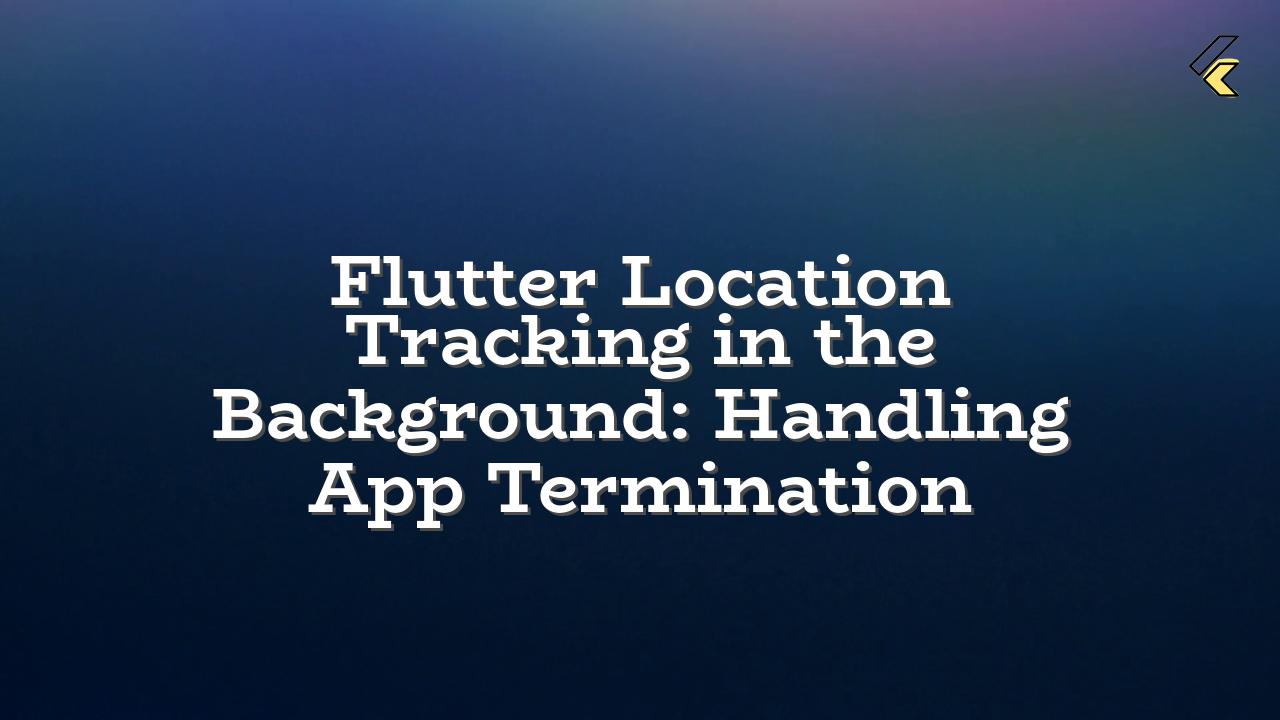This article details how to implement background location tracking in a Flutter application, specifically addressing the issue of app termination and ensuring continuous location updates every 30 seconds. It outlines the best practices and possible error handling scenarios.
The Problem: App Termination and Background Location Updates
Many Flutter applications require continuous location tracking, even when the application is in the background or terminated by the user. The built-in Flutter location services are designed for foreground access. Using standard methods, data isn’t reliably collected if the application is closed.
The Solution: Using Background Services and Isolates
To achieve continuous location updates even when the app is in the background or terminated, consider these techniques:
1. Background Service with Isolates
Combine a background service with an isolate to handle the continuous location retrieval. The isolate ensures that location updates continue uninterrupted even after the main application thread is terminated.
import 'dart:async';
import 'package:flutter_background_service/flutter_background_service.dart';
import 'package:geolocator/geolocator.dart';
import 'package:flutter/foundation.dart';
// ... other imports
class LocationService extends BackgroundService {
@override
Future onStart(ServiceInstance service) async {
// Set isRunning to true to allow the isolate to run
service.on('start', (event) {
// start background task
});
// Start the location update loop in a separate isolate
_locationUpdatesIsolate();
}
@override
Future onStop(ServiceInstance service) async {
// Stop the location update loop
// ...
}
Future _locationUpdatesIsolate() async {
// Start location service in isolate, preventing main thread block
Isolate.spawn(_updateLocation, null);
}
static Future _updateLocation(dynamic data) async {
// Initialize location service
// ...
while(isRunning){ // Condition to allow isolate loop
try {
LocationPermission permission = await Geolocator.requestPermission();
if (permission == LocationPermission.denied) {
// Handle permission denial.
return;
}
Position position = await Geolocator.getCurrentPosition();
// ... Send data ...
print(position.toString()); // Example print statement
} catch (e) {
print("Error updating location: $e");
}
await Future.delayed(const Duration(seconds: 30)); // update every 30 seconds
}
}
}
// ... other parts of the class
2. Error Handling
Implement comprehensive error handling within the isolate’s _updateLocation function:
- Location Permissions: Check for location permissions regularly. If permission is denied, handle it gracefully. Guide the user to enable permissions.
- Geolocator Errors: Catch any exceptions from the
Geolocatorlibrary (e.g., location unavailable, permission issues). Provide informative error messages to the user and log errors appropriately. - Network Errors: Consider network errors if you’re sending location data. Implement retry mechanisms or alternative data storage.
- Isolate Communication: Ensure communication with the main thread if needed for updating UI components or performing UI interactions.
3. Important Considerations:
- Background Services Package: Use a suitable background service package (e.g.,
flutter_background_service) to handle the background service. Ensure compatibility with your Flutter version. - Platform Differences: Background services and access to locations behave differently between Android and iOS. Consider platform-specific limitations.
- Battery Usage: Be mindful of battery consumption, especially for continuous location tracking in the background. Consider optimizing the frequency and duration of location updates.
Possible Errors and Solutions
| Error | Possible Cause | Solution |
|---|---|---|
| Location Permissions Denied | User has not granted location access. | Prompt the user to grant location permissions. Use Geolocator.requestPermission(). Display clear error messages. |
| Location Services Unavailable | Location services are disabled or unavailable. | Display an appropriate message. Check location settings in your app’s settings. |
| Isolate Exception | Error during location retrieval within the isolate. | Implement comprehensive error handling within the isolate’s function. Log errors. Inform the user. Use a try-catch block. |
By combining background services and isolates, you can implement robust location tracking, ensuring data collection in Flutter even when the application is terminated.

